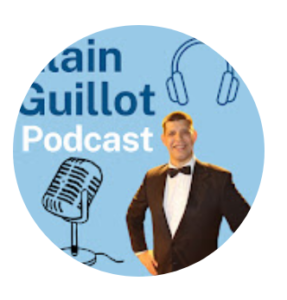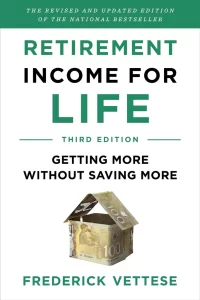Investing doesn’t have to be intimidating. Learn how BMO’s Asset Allocation ETFs are designed to take the complexity out of the equation, giving you an all-in-one solution that balances your portfolio without all the stress and second-guessing.

By Zayla Saunders, BMO ETFs
(Sponsor Content)
Have you ever found yourself thinking, “I really want to start investing, but where do I even begin?”
It’s easy to feel overwhelmed: between all the jargon, acronyms, and that mysterious “ticker talk” (yes you got it, those ETF symbols), it can seem like a lot to handle. Figuring out what to invest in, how much of each asset to hold, and when to rebalance? It’s enough to make anyone feel stuck, even the most analytical among us.
But here’s the thing: investing doesn’t have to be intimidating. BMO’s Asset Allocation ETFs are designed to take the complexity out of the equation, giving you an all-in-one solution that balances your portfolio without all the stress and second-guessing.
What are Asset Allocation ETFs?
Asset allocation ETFs are portfolios built with a pre-determined asset mix. Within that mix, you’ll find a variety of asset classes, like fixed income and equities, across various indexes, sectors, and countries. Instead of having to manually automate and rebalance your portfolio, these ETFs have an automated re-balance set to bring it back to your determined asset mix, for a low cost.
For example, the BMO All-Equity ETF (ZEQT) focuses on growth by allocating a higher percentage to equities, while the BMO Conservative ETF (ZCON) has a conservative approach with a higher allocation to fixed-income securities. This flexibility means that investors, whether just starting out or nearing retirement, can find a product that matches their goals.
Asset allocation ETFs provide a one-stop-shop for those looking for broad diversification, considering each investors unique goals and desired asset mix.
Solving a Problem: The Origins of Asset Allocation ETFs
To understand the popularity and importance of asset allocation ETFs, it can help to look back in time to how these useful tools came to existence. The concept was born out of a problem faced by many investors: managing a diverse investment portfolio, while sticking to their chosen asset allocation.
Imagine an investor in the early 2000s with a mix of individual stocks, bonds, and perhaps some mutual funds. Every year, they had to review their portfolio and adjust the weightings to match their evolving goals, all while considering tax implications, trading costs, and time constraints. Not only was this time-consuming, but there was also room for human error—sometimes leading to portfolios that were overly concentrated in certain sectors or regions.
The financial crisis of 2008 further highlighted the need for better portfolio management. Investors who had failed to properly diversify or rebalance suffered significant losses, while those who had a more disciplined approach weathered the storm more effectively. Recognizing these challenges, ETF providers like BMO saw an opportunity to create a product that simplified the investment process. The idea was simple but powerful: create an all-in-one ETF that would offer diversification, automatic rebalancing, and cost efficiency. By using ETFs as the building blocks, providers could offer exposure to global markets and different asset classes at a fraction of the cost of traditional mutual funds. Thus, the asset allocation ETF was born.
Source: BMO Global Asset Management, BMO Growth ETF (ZGRO:TSX), as of September 18th 2024
The portfolio holdings are subject to change without notice and may only represent a small percentage of portfolio holdings. They are not recommendations to buy or sell any particular security.
Why does the Mix Matter?
The famous Brinson, Hood, and Beebower (BHB) study, published in 1986, found that over 90% of a portfolio performance variability is driven by asset allocation, not stock picking or market timing.
This shifted how investors approach portfolio management, emphasizing the importance of diversification across asset classes for long-term success. Most asset allocation ETFs, or funds for that matter, are now built on this principle. Reinforcing the idea that asset allocation, rather than stock-picking or timing, drives the bulk of long-term investing success: a perfect fit for investors looking for a hands-off “couch-potato” way to build their wealth.
Why Asset Allocation ETFs?
Simplicity and Convenience
Asset allocation ETFs take care of the heavy lifting. With automatic rebalancing and built-in diversification, you get a hands-off investment strategy.
Diversification
These ETFs provide exposure to a broad mix of global stocks, ensuring you’re well diversified across sectors and regions, whether you prefer a conservative, growth, or somewhere in-between approach.
Cost-Effective
One of the biggest advantages of ETFs is their cost-effectiveness, and BMO asset allocation ETFs are no exception. Additionally, with fewer transactions needed to maintain the portfolio, investors can avoid high trading costs.
Long-term Focus
Asset allocation ETFs are designed with a long-term perspective in mind, making them ideal for investors focused on building wealth. By keeping a steady asset mix and rebalancing regularly, these ETFs help investors avoid emotional decision-making that often leads to buying high and selling low.
The T Series: A Tailored Solution for Retirees
One of the newer innovations in BMO’s lineup of asset allocation ETFs is the T series1, specifically designed for retirees and those nearing retirement. Retirees often face the challenge of generating a steady cash flow from their investments while minimizing the risk of running out of money. The T series solves this problem by offering a systematic withdrawal plan, allowing investors to receive monthly cash flow helping to ease retirement planning.
For example, the BMO Balanced ETF (T6 Series) (ZBAL.T) is a T series ETF designed to provide steady cash flow by investing in a balanced mix of equities and bonds. The fund pays out fixed monthly distributions (6% annualized)2 that are a blend of income and return of capital, which is especially valuable for in retirement.
Conclusion
BMO Asset Allocation ETFs offer a simple, diversified, and cost-effective solution for investors at every stage of life. Whether you’re just starting out, looking for steady growth, or planning for retirement, these ETFs provide the perfect blend of convenience and financial security. For retirees, the T series includes the benefits of consistent cashflow, making it easier to manage withdrawals during retirement.
With BMO’s asset allocation ETFs, investors can feel confident in their financial future, knowing they’ve chosen a product that aligns with their long-term goals and offers peace of mind in any market condition.
For more information visit BMO Global Asset Management to learn more.
1 T series – These units are Fixed Percentage Distribution Units that provide a fixed monthly distribution based on an annual distribution rate of 6%. Distributions may be comprised of net income, net realized capital gains and/or a return of capital. The monthly amount is determined by applying the annual distribution rate to the T Series Fund’s unit price at the end of the previous calendar year, arriving at an annual amount per unit for the coming year. This annual amount is then divided into 12 equal distributions, which are paid each month.
2 Standardized Performance: ZBAL.T, BMO Balanced ETF (T6 Series) 1 Year: 15.91%, Since Inception: 5.96% as of August 30th, 2024.
ZGRO.T, BMO Growth ETF (T6 Series) 1 Year: 18.78%, Since Inception: 14.61% as of August 30th, 2024.
 Zayla Saunders is Senior Associate, Online Distribution for BMO Exchanged Traded Funds. As a member of BMO Global Asset Management’s ETF Direct Distribution Team, Zayla brings more than a decade of experience in finance. She holds the Chartered Investment Manager (CIM) designation is a graduate of the University of Manitoba. Since joining BMO in 2020, Zayla has focused on making ETF investing accessible through strategic partnerships content creation, and industry collaborations. Know for her client-focused expertise and investment knowledge, she empowers investors to make informed, confident decisions.
Zayla Saunders is Senior Associate, Online Distribution for BMO Exchanged Traded Funds. As a member of BMO Global Asset Management’s ETF Direct Distribution Team, Zayla brings more than a decade of experience in finance. She holds the Chartered Investment Manager (CIM) designation is a graduate of the University of Manitoba. Since joining BMO in 2020, Zayla has focused on making ETF investing accessible through strategic partnerships content creation, and industry collaborations. Know for her client-focused expertise and investment knowledge, she empowers investors to make informed, confident decisions.
Disclaimer: This article has been sponsored by BMO ETFs. All investments involve risk. The value of an ETF can go down as well as up and you could lose money. The risk of an ETF is rated based on the volatility of the ETF’s returns using the standardized risk classification methodology mandated by the Canadian Securities Administrators. Historical volatility doesn’t tell you how volatile an ETF will be in the future. An ETF with a risk rating of “low” can still lose money. For more information about the risk rating and specific risks that can affect an ETF’s returns, see the BMO ETFs’ prospectus. This article is for information purposes. The information contained herein is not, and should not be construed as, investment, tax or legal advice to any party. Particular investments and/or trading strategies should be evaluated relative to the individual’s investment objectives and professional advice should be obtained with respect to any circumstance. The viewpoints expressed by the author represents their assessment of the markets at the time of publication. Those views are subject to change without notice at any time. The information provided herein does not constitute a solicitation of an offer to buy, or an offer to sell securities nor should the information be relied upon as investment advice. Past performance is no guarantee of future results. This communication is intended for informational purposes only. Any statement that necessarily depends on future events may be a forward-looking statement. Forward-looking statements are not guarantees of performance. They involve risks, uncertainties and assumptions. Although such statements are based on assumptions that are believed to be reasonable, there can be no assurance that actual results will not differ materially from expectations. Investors are cautioned not to rely unduly on any forward-looking statements. In connection with any forward-looking statements, investors should carefully consider the areas of risk described in the most recent prospectus. Distribution yields are calculated by using the most recent regular distribution, or expected distribution, (which may be based on income, dividends, return of capital, and option premiums, as applicable) and excluding additional year end distributions, and special reinvested distributions annualized for frequency, divided by month end net asset value (NAV). The yield calculation does not include reinvested distributions. Distributions are not guaranteed, may fluctuate and are subject to change and/or elimination. Distribution rates may change without notice (up or down) depending on market conditions and NAV fluctuations. The payment of distributions should not be confused with the BMO ETF’s performance, rate of return or yield. If distributions paid by a BMO ETF are greater than the performance of the investment fund, your original investment will shrink. Distributions paid as a result of capital gains realized by a BMO ETF, and income and dividends earned by a BMO ETF, are taxable in your hands in the year they are paid. Your adjusted cost base will be reduced by the amount of any returns of capital. If your adjusted cost base goes below zero, you will have to pay capital gains tax on the amount below zero. Cash distributions, if any, on units of a BMO ETF (other than accumulating units or units subject to a distribution reinvestment plan) are expected to be paid primarily out of dividends or distributions, and other income or gains, received by the BMO ETF less the expenses of the BMO ETF, but may also consist of non-taxable amounts including returns of capital, which may be paid in the manager’s sole discretion. To the extent that the expenses of a BMO ETF exceed the income generated by such BMO ETF in any given month, quarter, or year, as the case may be, it is not expected that a monthly, quarterly, or annual distribution will be paid. Distributions, if any, in respect of the accumulating units of BMO Short Corporate Bond Index ETF, BMO Short Federal Bond Index ETF, BMO Short Provincial Bond Index ETF, BMO Ultra Short-Term Bond ETF and BMO Ultra Short-Term US Bond ETF will be automatically reinvested in additional accumulating units of the applicable BMO ETF. Following each distribution, the number of accumulating units of the applicable BMO ETF will be immediately consolidated so that the number of outstanding accumulating units of the applicable BMO ETF will be the same as the number of outstanding accumulating units before the distribution. Non-resident unitholders may have the number of securities reduced due to withholding tax. Certain BMO ETFs have adopted a distribution reinvestment plan, which provides that a unitholder may elect to automatically reinvest all cash distributions paid on units held by that unitholder in additional units of the applicable BMO ETF in accordance with the terms of the distribution reinvestment plan. For further information, see the distribution policy in the BMO ETFs’ prospectus. Index returns do not reflect transactions costs, or the deduction of other fees and expenses and it is not possible to invest directly in an Index. Past performance is not indicative of future results. The Index is a product of S&P Dow Jones Indices LLC or its affiliates (“SPDJI”), and has been licensed for use by the Manager. S&P®, S&P 500®, US 500, The 500, iBoxx®, iTraxx® and CDX® are trademarks of S&P Global, Inc. or its affiliates (“S&P”) and Dow Jones® is a registered trademark of Dow Jones Trademark Holdings LLC (“Dow Jones”), and these trademarks have been licensed for use by SPDJI and sublicensed for certain purposes by the Manager. The ETF is not sponsored, endorsed, sold or promoted by SPDJI, Dow Jones, S&P, their respective affiliates, and none of such parties make any representation regarding the advisability of investing in such product(s) nor do they have any liability for any errors, omissions, or interruptions of the Index. The ETF referred to herein is not sponsored, endorsed, or promoted by MSCI and MSCI bears no liability with respect to the ETF or any index on which such ETF is based. The ETF’s prospectus contains a more detailed description of the limited relationship MSCI has with the Manager and any related ETF. Commissions, management fees and expenses all may be associated with investments in exchange traded funds. Please read the ETF Facts or prospectus of the BMO ETFs before investing. The indicated rates of return are the historical annual compounded total returns including changes in unit value and reinvestment of all dividends or distributions and do not take into account sales, redemption, distribution or optional charges or income taxes payable by any unitholder that would have reduced returns. Exchange traded funds are not guaranteed, their values change frequently and past performance may not be repeated. For a summary of the risks of an investment in the BMO ETFs, please see the specific risks set out in the BMO ETF’s prospectus. BMO ETFs trade like stocks, fluctuate in market value and may trade at a discount to their net asset value, which may increase the risk of loss. Distributions are not guaranteed and are subject to change and/or elimination. BMO ETFs are managed by BMO Asset Management Inc., which is an investment fund manager and a portfolio manager, and a separate legal entity from Bank of Montreal. BMO Global Asset Management is a brand name under which BMO Asset Management Inc. and BMO Investments Inc. operate. “BMO (M-bar roundel symbol)” is a registered trademark of Bank of Montreal, used under licence.





